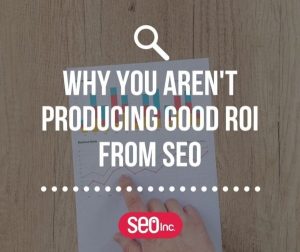
Image courtesy of Fransisco Palao
Okay, so exponential organizations may not be the new normal, but you may soon find an exponential organization driving your established brand out of business with a new business model. Here’s a little excerpt from their book on exponential organizations showing just how dangerous they are to existing organizations:
Now it is time to introduce the Exponential Organization leveraging openness, transparency, and abundance in a new way. This is a new organizational model that is conducive to an exponential age. It closes the gap between the linear organization and its exponential environment. It is at least 10x more effective, efficient, and/or faster relative to its linear peers in the same market.
In a slideshare, co-author, Yuri van Geest, shares the reality that the half-life of an organization dropped from 30 years to only five years in 2014 and that 85 percent of the Fortune 500 in 1955 are not on the list in 2014.
So, what is an exponential organization and how do you protect your brand from one?
Exponential organizations
 I first heard the term “exponential organization” at a recent Modev meetup and immediately bought the book (I highly recommend ordering this book*). Here’s the definition from the book:
I first heard the term “exponential organization” at a recent Modev meetup and immediately bought the book (I highly recommend ordering this book*). Here’s the definition from the book:
An Exponential Organization is one whose impact (or output) is disproportionally large—at least 10x larger—compared to its peers because of the use of new organizational techniques that leverage accelerating technologies.
Exponential organizations use crowdsourcing, connected consumers, and exchanging the physical for information.
The book is an outgrowth of its publisher, Singularity University — an offshoot of Google and a few other forward thinking organizations and co-founder, Ray Kurzwell.
Singularity University derives its name from the singularity; a term commonly applied to technological singularity, which is, according to Wikipedia,:
The hypothesis that accelerating progress in technologies will cause a runaway effect wherein artificial intelligence will exceed human intellectual capacity and control, thus radically changing civilization in an event called “the singularity.” Because the capabilities of such an intelligence may be impossible for a human to comprehend, the technological singularity is an occurrence beyond which events may become unpredictable, unfavorable, or even unfathomable.
While Singularity evokes notions of 2012, A Space Odyssey and other harbingers of a world run by robots instead of humans, the real singularity is as close as 2030, according to Google.
The relationship between the singularity and exponential organizations is tangential; both relying on the notion that humans, aided by artificial intelligence and other advanced technologies, allow organizations to grow at a very rapid pace.
What you need to know about exponential organizations
I’m not going to give an abstract of the entire book — you really need to read it yourself — but I want to discuss some of the principles behind the success of exponential organizations.
According to Ismail,
Exponential organizations are the future of commerce, non-profits and even government. It is the only model that can keep up — and take advantage of — the ever-accelerating pace of technology-driven change that defines our time. My goal with this book is to not only show start-ups how to achieve exponential growth, but even show established companies how they can implement exponential principles.
Rapid growth in exponential organizations comes from the Internet, 3D printing, biotechnology, artificial intelligence, drones, mobile, and nanotechnology –tools that didn’t exist when most Fortune 500 firms evolved. And, if these top organizations don’t evolve to include these technologies in their DNA, they won’t be around at the end of the decade.
In the past, organizations succeeded by owning the most stuff — machines, land, even people. Ownership allowed organizations to grow linearly. For instance, replace a person with a machine and your increase productivity by a discrete amount. Own more machines and you have more production.
Exponential organizations demonstrate exponential growth. AirBnB, Uber, Google Maps, and others represent this new paradigm of exponential growth relying on collaboration, rather than ownership. Instead, these organizations harness the power of connectivity — individuals renting rooms in their homes, using their personal cars, and uploading images to a cloud service to create incredibly detailed maps. Exponential organizations use information to create power.
Big data and exponential growth
For many exponential organizations, big data drives exponential growth. Tomorrows internet-connected devices, for instance, send petabytes of information to help organizations and governments plan more efficient responses. Take the example of smart plugs. These plugs allow you to adjust devices using a mobile phone or computer to set the temperature of your home, monitor your refrigerator, or record a TV program. Smart plugs create oceans of data that can help electric utilities better forecast consumption, which allows them to employ their capital resources more efficiently.
Massive data from projects such as the low Earth orbit project offer the potential for many experiential organizations and form the foundation for Google’s self-driving car. Imagine a community being able to predict how many emergency vehicles they need and how best to deploy them by watching for traffic volume or a company like Amazon using its drones (which will be in the skies soon) to collect data on construction to update maps.
Leverage to the max
Exponential organizations not only use information technologies to support their exponential growth, they operate lean; meaning they have few employees and own little stuff.
Think about your typical Fortune 500 company with its massive bureaucracy and competing priorities that make them unwieldy in the face of change; taking years to bring a new product to market rather than days. No wonder these dinosaurs experience flat or nearly flat year on year growth.
Innovation is the name of the game and bureaucracy slows down innovation without improving the success of innovations once they reach the market. Exponential growth doesn’t come from expanding existing product markets, but through innovative products.
So, how do you speed the process of innovation?
Simple. Change the way organizations create innovative products by eliminating bureaucratic roadblocks, such as linear new product development pathways and approvals that slow down the process. Every organization should have a division devoted to new products that operates somewhat autonomously from the rest of the organization and this new division shouldn’t be viewed as a profit center for the organization.
And, don’t be afraid of creative destruction — the process of new products making existing products obsolete.
Apple is a good case study for this. When the board ousted Steve Jobs, they fell into linear thinking. Then, the Lisa computer was the backbone supporting Apple’s growth. Without Jobs at the helm, development and management teams obsessed on increasing the capacity of Lisa, to the exclusion of new product development. When Jobs returned, they relegated him to a small team working on what became the Mac. With few resources, Jobs turned the Mac into what it is today — a dominant player in the computer industry.
Lean gets to the heart of innovation — creating maximum customer value while eliminating wasteful practices. As an organization, lean means renting, not buying resources or returning to the financial notion of leverage.
- Instead of hiring a development team, pay someone or an agency to develop your product.
- Rather than hiring marketing, hire an agency to manage marketing.
- Rather than hiring plant staff, hire a contract manufacturing operation.
- Rather than buying office space, rent a flexible space in a co-working operation like Uber or WeWork.
- Need a logo, go to 99 Designs; need someone to answer the phones or write a press release, use Odesk.
Leveraging talent and physical plant rather than buying makes a lot of sense. Instead of paying for resources you don’t need or don’t use all the time, you only pay for what you use. And, using these resources instead of buying them gives you the flexibility to expand and contract as conditions change so you respond to changes in the environment quickly and seamlessly.
Leverage also means you likely get someone who’s an expert to solve your problem rather than paying to hire someone who’s just learning their craft. For instance, at 99 Designs, you get top quality designers for a fraction of what it would cost to hire them. The same is true for marketing talent. You can hire my agency to manage your digital marketing for a fraction of what it would cost to have just me on staff.
Final thoughts
This is just a brief introduction to the concept of exponential organizations. Over the coming weeks, I’ll expand on these principles, focusing on how to organize for exponential growth and some limitations to this type of organization.
(338)
Report Post





